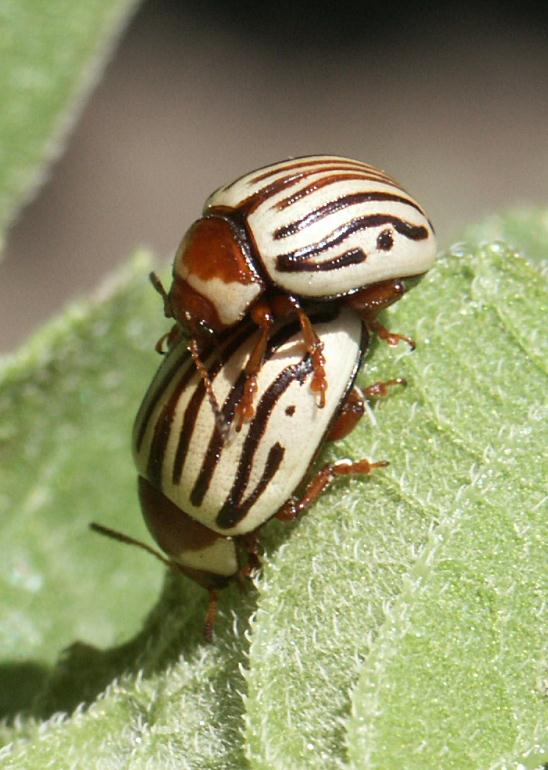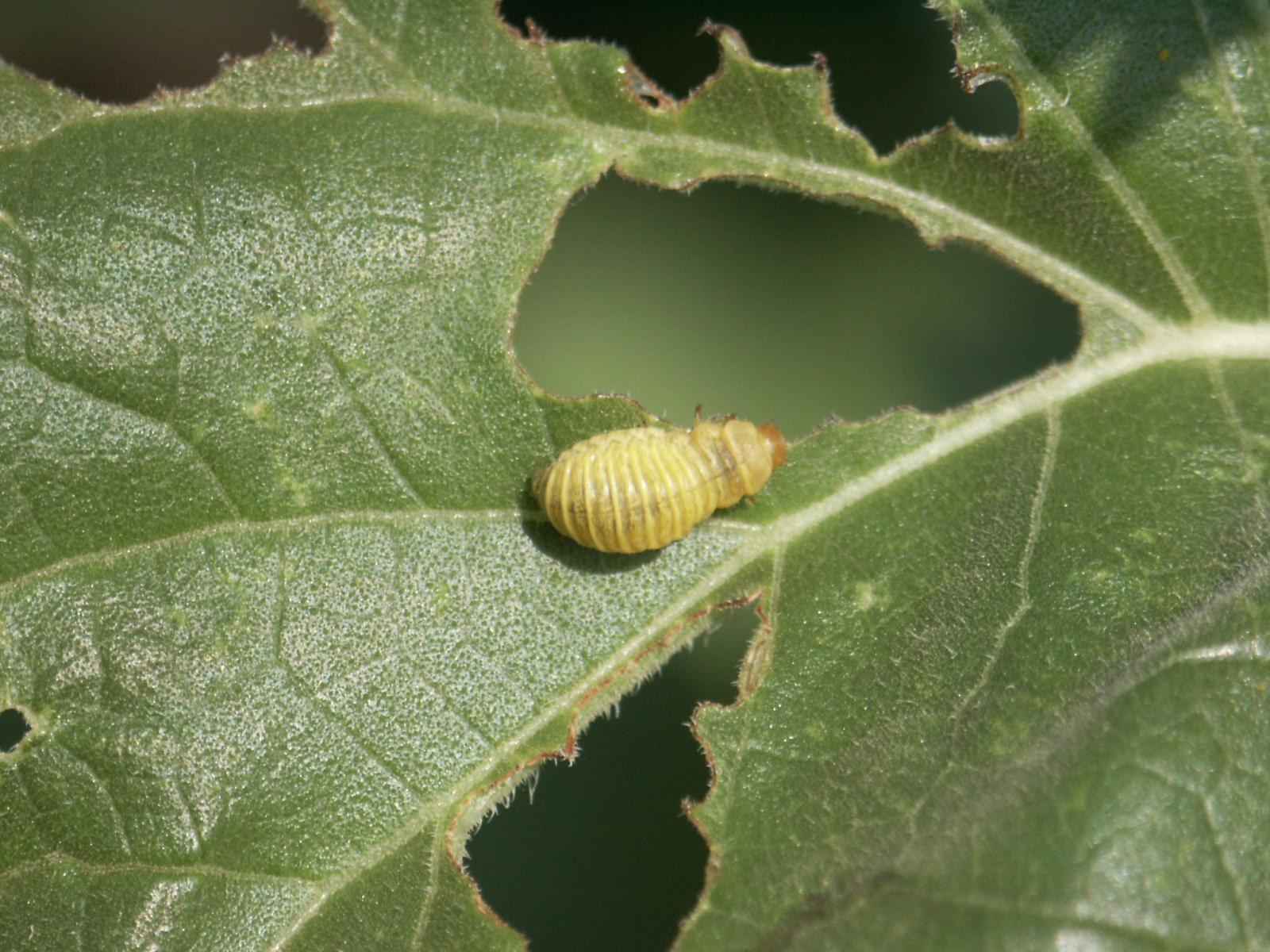Sunflower Insects
Sunflower Beetle, Zygogramma exclamationis (Coleoptera: Chrysomelidae)

Mating pair of Zygogramma exclamationis.

Larva of sunflower beetle feeding on leaf.
Identification
This is a relatively large leaf beetle, 6.0 – 8.0 mm (1/4 – 3/8 inches) long. The head is reddish brown and the wing covers are cream-colored with a series of longitudinal brown stripes on each, the lowest ending in an exclamation point. The eggs are ovate, pale yellowish, and are typically laid in loose aggregations on plant surfaces. The slow-moving larvae are pale greenish to yellowish with a swollen abdomen and light brown head capsule. Adult feeding creates ‘shot-holing’ in the leaves, whereas the more damaging larval feeding leaves larger ‘windows’ chewed in the leaves.
Life History and Behavior
This insect is quite specific to sunflower and, in Kansas, local populations are frequently sustained on wild Helianthus spp. when cultivated sunflowers are absent. There is only one generation per year and the adults overwinter in the soil, emerging in late spring. Females may lay anywhere between 100 and 2000 eggs over a period of 40-60 days. Eggs require about one week to hatch and the larvae feed for up to 6 weeks, depending on temperature, before pupating in the soil. Within another two weeks, callow adults emerge to feed on foliage for a short while before re-entering the soil to overwinter. Mating and reproduction does not occur until the following spring.
Like most insect herbivores that feed in exposed locations, the sunflower beetle suffers many forms of natural mortality throughout its life cycle, and the survival of different life stages can be quite variable from year to year. Eggs are susceptible to desiccation during hot dry weather and heavy rains may dislodge many larvae from their plants. Larvae are also subject to predation by bugs, carabid beetles and birds and parasitism by flies of the family Tachinidae. In many regions, these natural sources of mortality may be sufficient to keep populations below economic levels in most years.
Management
The sunflower beetle is considered to be one of the most damaging defoliators of cultivated sunflower in North America, but economically significant populations appear to be rare in Kansas and are more common to the north. Fields with later planting dates are usually less affected, probably because early emerging fields accumulate emergent beetles over a longer period of time, and delayed planting may be considered as one tactic within an IPM program for sunflower beetle in regions with a history of damaging infestations. Even though adults overwinter in the soil, studies in North Dakota suggest that tillage has little effect on their survival and should not be considered as a potential control tactic.
A degree-day model has been calculated to predict the emergence of adults and can be used to determine when field scouting should be initiated. Based on measurements of soil temperature at a depth of 2 in beginning March 1 and a base temperature of 32 °F, emergence begins at 416 DD and is 50 % complete by 710 DD. Use the ‘X’ pattern to sample fields, avoiding field birders and counting beetles on 20 plants at each of a minimum of 5 sampling sites. The economic threshold is generally considered to be between 1 and 2 adult beetles per plant at the seedling stage. On larger plants, the threshold is 10-15 larvae per plant visible on upper leaves, or 25% defoliation, provided a majority of larvae are still actively feeding. Preliminary studies suggest that seed treatments can provide early-season control of adults, with consequent reduction of oviposition and larval populations, but more comprehensive data is required to confirm their reliability.
Please refer to the most recent Sunflower insect Management Guide for specific control recommendations.
Page last updated 10/2/2013 by J.P. Michaud.